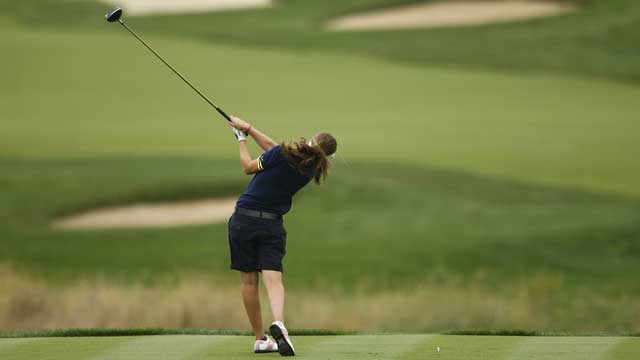NEWS
Your 3 Wood is More than a Fairway Wood
By Steve Anderson, PGA
Published on

In 1982 Tom Watson won the U.S. Open at Pebble Beach with a dramatic chip-in on the 71st hole to beat Jack Nicklaus. Watson averaged 300 yards off the tee that week, which was certainly a contributing factor toward his win.
A week later, Watson participated in a test with some specially made golf balls that had no dimples. They were smooth, like Ping-Pong balls. The farthest drive Watson hit went only 100 yards! What this demonstrated was that two-thirds of the distance a ball flies is caused by its backspin. The more the ball spins, the greater the lift and distance will be.
Watson's clubhead speed was 120 mph, more than one-third faster than the weekend golfer. He hits the ball hard enough to impart sufficient backspin to attain tremendous distances. The weekender, with his 80-mph clubhead speed, cannot attain this length, in part because of lower clubhead speed, but also because of less backspin. The average golfer will get more hangtime (distance) with the increased backspin of the 3-wood.
A driver with only 9 or 10 degrees of loft will not put much backspin on a ball. To get any measurable spin, the club head would need to be moving very fast. A driver must generate a tremendous amount of speed to attain enough backspin to achieve any distance. In other words, if your club head speed is half of what a tour pro's is, then you need double the loft to achieve the same spin rate. Does that make sense? If you don't swing as fast as a tour pro, you shouldn't use a driver with the same loft as they do. In the book, The search for the Perfect Swing, tests were done that concluded, "more backspin will hold the ball up in the air from two to six times longer than lower-lofted clubs".
Titilest has a chart showing what loft matches up with a player's clubhead speed. A slower swing speed needs a higher loft to produce optimum results.
Now this is not to say that you'll hit your pitching wedge farther than your 3-wood. The length of your shaft is a huge factor in the distance you hit the ball and the longer shafts in your woods contribute greatly to achieving distance. The shaft in your pitching wedge is far too short to let you hit the ball any great distance. The length of the shaft also influences your ability to square up the clubface and hit the ball straight. The driver has the longest shaft of the set. Because of its length, you stand further away from the ball than you do with any other club. This may cause the club to swing too far around you on the backswing (inside) and may make it difficult to square up the club at impact. The 3-wood, with its shorter shaft, tends to swing up and down the line straighter, which aids you in squaring the clubface and hitting the ball with greater consistency.
The greater loft in your 3-wood also helps your accuracy when compared with a driver, and understanding this is also helpful. Let's say, (for argument sake), that our 3-wood has twice the loft of your driver. When hit squarely, your 3-wood will have twice as much backspin. This is dominant spin. Now, let's say you slice across your 3-wood 10 percent. The ball will have some sidespin, but it will have a lot of backspin, so it goes fairly straight. If you slice your driver the same 10 percent, it will slice more because it has less backspin to keep it straight.
All in all, your 3- or even 5-wood may produce longer, straighter shots on a more consistent basis. That is not to say that you can't ever hit a driver. Common sense tells us that a longer, lower-lofted driver is harder to hit than other clubs, so first master the other woods before tackling your driver. It may just become the favorite club in your bag.